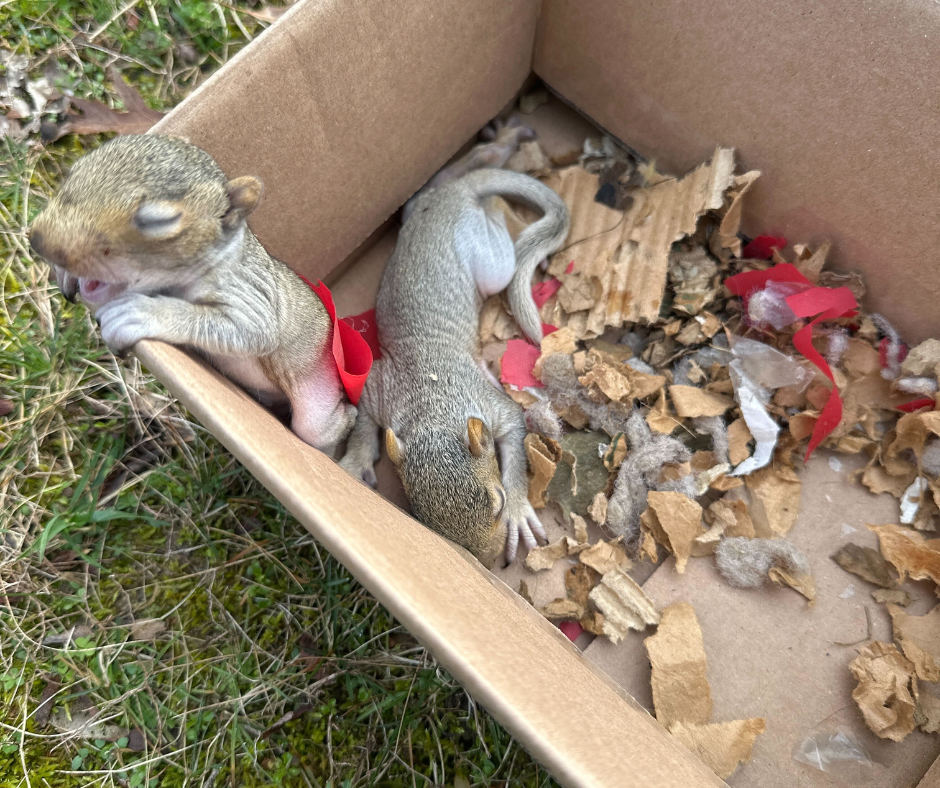 The Two Squirrel Nesting Seasons
The Two Squirrel Nesting Seasons
The Two Squirrel Nesting Seasons
Squirrels are one of the most persistently annoying nuisance animals in the Westchester County area, known for scratching and gnawing their way into attics to build their nests, often ripping up and soiling your insulation in the process. Squirrels are drawn to your home’s attic because it provides them with a safe, warm place shielded from predators and the elements to raise their babies, but did you know squirrels actually have babies TWO times a year? Don’t worry, Westchester Wildlife can help. We can safely and humanely remove both the mother and baby squirrels from your attic space.
When Do Squirrels Have Babies?
Squirrels have two mating seasons, the first stretching from December to February, and the second from June through August. The mother squirrel has a gestation period of around 38 to 46 days, so a month and a half after mating they will give birth to a litter of pups. The first litters of squirrel babies are born between February and April, and then the second litters are born in August or September.
When Do Baby Squirrels Leave the Nest?
Baby squirrels, sometimes called squirrel pups, are born helpless with their eyes closed. At four weeks old, squirrel babies will open their eyes, then explore outside the nest at about six weeks. Once squirrels are 10 weeks old, they are fully ready to be on their own, and the mother squirrel kicks them out of the nest so she can start the mating cycle again. There is a slight difference in this cycle between the first and second litter of the year. The first litter of the year will leave the nest right at 10 weeks, whereas the second litter, born in the late summer, will stay with the mother a bit longer, as they will typically hit maturity in the winter and will need to stay by their mother’s side to survive longer.
Squirrel Nests in Attic
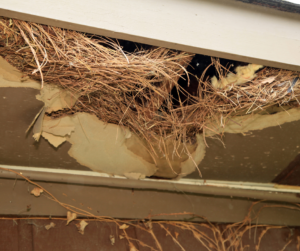 There are two main types of squirrel nests: a drey and a cavity nest. Dreys are the balls of dead leaves, twigs and grass that you often see high up in the bare branches of trees during the winter. Cavity nests are squirrel nests built inside a hollowed-out tree. The tree provides the squirrel with safety and comfort, and sometimes even a food source. Squirrels also have “vacation homes” which are a third type of nest that is used to rest and store food along their scavenging route. Squirrels will often build their nests inside your attic, as your attic provides a very safe, secure place where squirrels can rest and raise their babies in peace, without fear of harsh weather or predators. Squirrel nests inside your attic may be a main nest or a vacation home, but either way, they can cause a lot of damage.
There are two main types of squirrel nests: a drey and a cavity nest. Dreys are the balls of dead leaves, twigs and grass that you often see high up in the bare branches of trees during the winter. Cavity nests are squirrel nests built inside a hollowed-out tree. The tree provides the squirrel with safety and comfort, and sometimes even a food source. Squirrels also have “vacation homes” which are a third type of nest that is used to rest and store food along their scavenging route. Squirrels will often build their nests inside your attic, as your attic provides a very safe, secure place where squirrels can rest and raise their babies in peace, without fear of harsh weather or predators. Squirrel nests inside your attic may be a main nest or a vacation home, but either way, they can cause a lot of damage.
It might sound nice to let a family of squirrels stay in your attic, but in actuality, squirrels are dangerous wild animals, and nesting in your attic can pose a danger to both you and them. Squirrels will chew on wires and wood, rip up your attic insulation, and soil it with their urine and feces. Squirrels might also bring in outside nesting materials, which can react with chewed wires and torn insulation and cause a fire. Squirrels also carry parasites like mites, fleas and ticks, and can spread illnesses like leptospirosis, tularemia and salmonella.
Humane Squirrel Removal in Westchester County
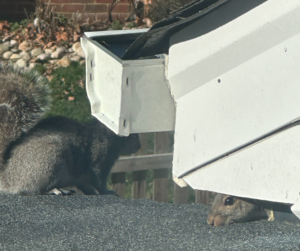 If you have squirrel nests inside your attic, don’t worry, Westchester Wildlife can help. We offer squirrel removal as well as seal-outs and exclusions to prevent the squirrels from re-entering the property. Never attempt to remove baby squirrels yourself, as mother squirrels are very adept at hiding their babies, and you might accidentally leave one in your attic space. Our technicians are trained to safely and carefully remove all squirrels from your attic, and we will set up a trapping program and a one way door to make sure the entire squirrel population is removed before we begin the seal out process.
If you have squirrel nests inside your attic, don’t worry, Westchester Wildlife can help. We offer squirrel removal as well as seal-outs and exclusions to prevent the squirrels from re-entering the property. Never attempt to remove baby squirrels yourself, as mother squirrels are very adept at hiding their babies, and you might accidentally leave one in your attic space. Our technicians are trained to safely and carefully remove all squirrels from your attic, and we will set up a trapping program and a one way door to make sure the entire squirrel population is removed before we begin the seal out process.
Contact Westchester Wildlife today for the best squirrel removal and squirrel nest removal in Westchester County. We also service Dutchess County, NY, Putnam County, NY, and Fairfield County, CT.
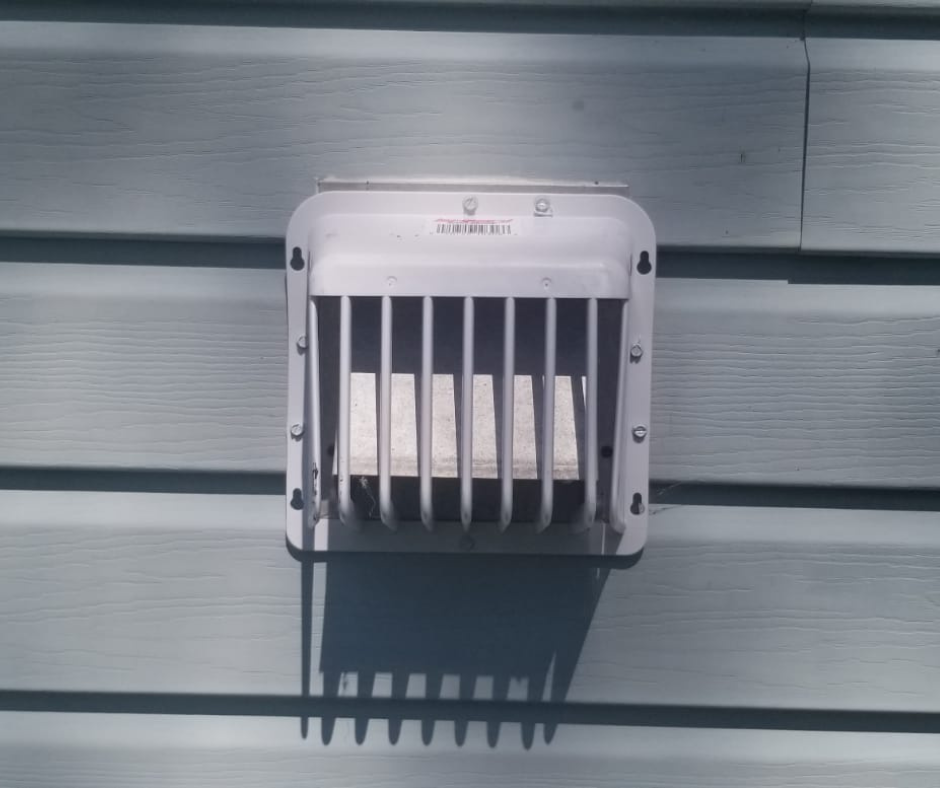 Bird Proofing Your Home This Spring
Bird Proofing Your Home This Spring
Bird Proofing Your Home This Spring
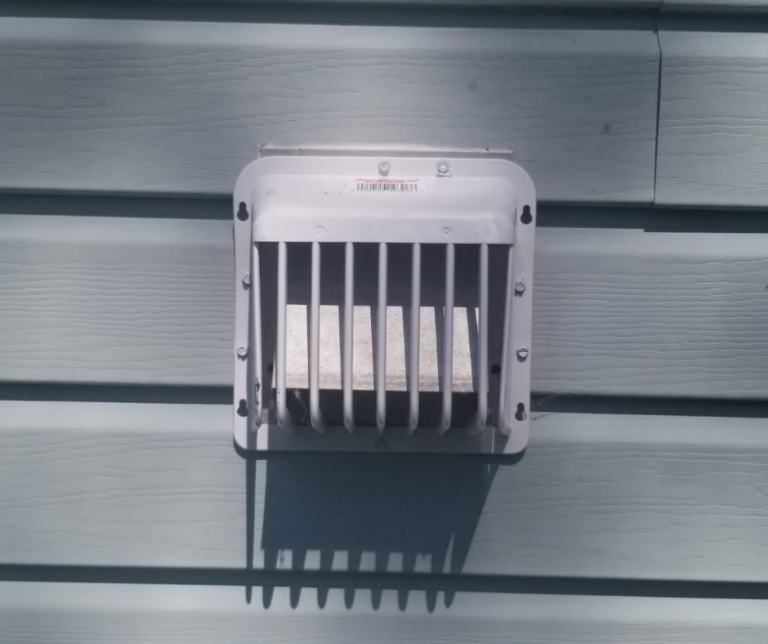
Spring is almost here, and birds have already been causing issues in homes across Westchester County. Birds like pigeons, starlings and sparrows are known to nest inside attic spaces and exterior dryer vents, where they can cause extensive damage to your attic insulation and pose a fire hazard with their nests. Westchester Wildlife can help, we can remove birds from your property as well as provide deterrents to keep these birds away in the future.
Bird in Attic Damage
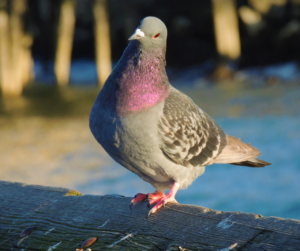 If your roof or soffit has a crack or gap that birds can exploit, they will use it to get inside your home and build a nest in your attic. Birds will often rip up your attic insulation to make their nest, which can lower the effectiveness of the insulation, leading to temperature dysregulation in the home. Birds may also rip out electrical wiring, which can cause a fire hazard. Birds also love to bring in outside nesting material like dead leaves, dead grass, pine needles, straw and twigs, which can also create a major fire hazard. Birds will also leave behind their droppings, which can contain uric acid, which will damage and corrode buildings over long periods of time. Bird droppings are also known to spread the spores that cause the fungal lung infection histoplasmosis. Birds also carry parasites like bird mites, which they can spread to the rest of the house. Birds inside your attic might also make a lot of noise, which can become a real nuisance while you are trying to sleep.
If your roof or soffit has a crack or gap that birds can exploit, they will use it to get inside your home and build a nest in your attic. Birds will often rip up your attic insulation to make their nest, which can lower the effectiveness of the insulation, leading to temperature dysregulation in the home. Birds may also rip out electrical wiring, which can cause a fire hazard. Birds also love to bring in outside nesting material like dead leaves, dead grass, pine needles, straw and twigs, which can also create a major fire hazard. Birds will also leave behind their droppings, which can contain uric acid, which will damage and corrode buildings over long periods of time. Bird droppings are also known to spread the spores that cause the fungal lung infection histoplasmosis. Birds also carry parasites like bird mites, which they can spread to the rest of the house. Birds inside your attic might also make a lot of noise, which can become a real nuisance while you are trying to sleep.
Bird in Dryer Vent Damage
Most homes contain a clothes dryer, equipped with a vent to the outside that blows out hot air. Dryer lint is often caught and blown out this vent in the process. Birds are attracted to the enclosed space that these vents provide, protected from predators and the elements. Unfortunately, birds like pigeons, sparrows and starlings will bring in their dry nesting material, made of dead leaves and twigs. The dry nesting material can block the lint from being blown out and cause a buildup, and the hot air from the dryer reacting with the built-up lint and the dead leaves and twigs can create a major fire hazard. Pigeons, starlings and sparrows will leave behind droppings in these vents, which can corrode the structure over time and spread diseases like histoplasmosis and cryptococcosis.
Dryer Vent Bird Guards
Spring is on the way, so now is the best time to start bird-proofing your home. Your first step should be getting a heavy duty bird-guard installed on your dryer vent. Dryer vents are one of the biggest target areas for pigeons, sparrows and starlings, so installing one of these guards on your home now can save you the trouble of digging out nesting material from this vent later. Don’t worry about installing a bird guard yourself – Westchester Wildlife has you covered. We can install bird guards on your home in Westchester County, Putnam County and Dutchess County NY, as well as Fairfield County and Litchfield County, CT.
Bird Exclusions and Deterrents
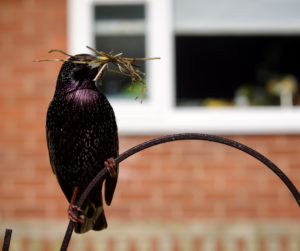 Another great way to bird proof your home this spring is to have a licensed wildlife removal expert like Westchester Wildlife inspect your home for any potential entry points on your roof or soffit. After the entry points have been identified and all birds have been removed, then one of our licensed experts can seal off any cracks or gaps in your roof or soffit, preventing any birds from getting inside.
Another great way to bird proof your home this spring is to have a licensed wildlife removal expert like Westchester Wildlife inspect your home for any potential entry points on your roof or soffit. After the entry points have been identified and all birds have been removed, then one of our licensed experts can seal off any cracks or gaps in your roof or soffit, preventing any birds from getting inside.
For even further protection against birds, you can use commercial products like bird netting and spike strips, which will prevent these birds from even landing on target areas like roofs.
Best Bird Control Near Me
Bird proofing your home this spring is important, as when birds gain entry to the home, they can rip up your insulation, create fire hazards with their nesting material, and spread illnesses like histoplasmosis and cryptococcosis. Westchester Wildlife can help with your bird proofing projects this spring, we can provide you with bird guard installation and our expert technicians can identify and seal any entry points that birds are using to get inside your attic. If birds have soiled or ripped up your insulation, we also offer attic insulation remediation services. Contact us today to get started!
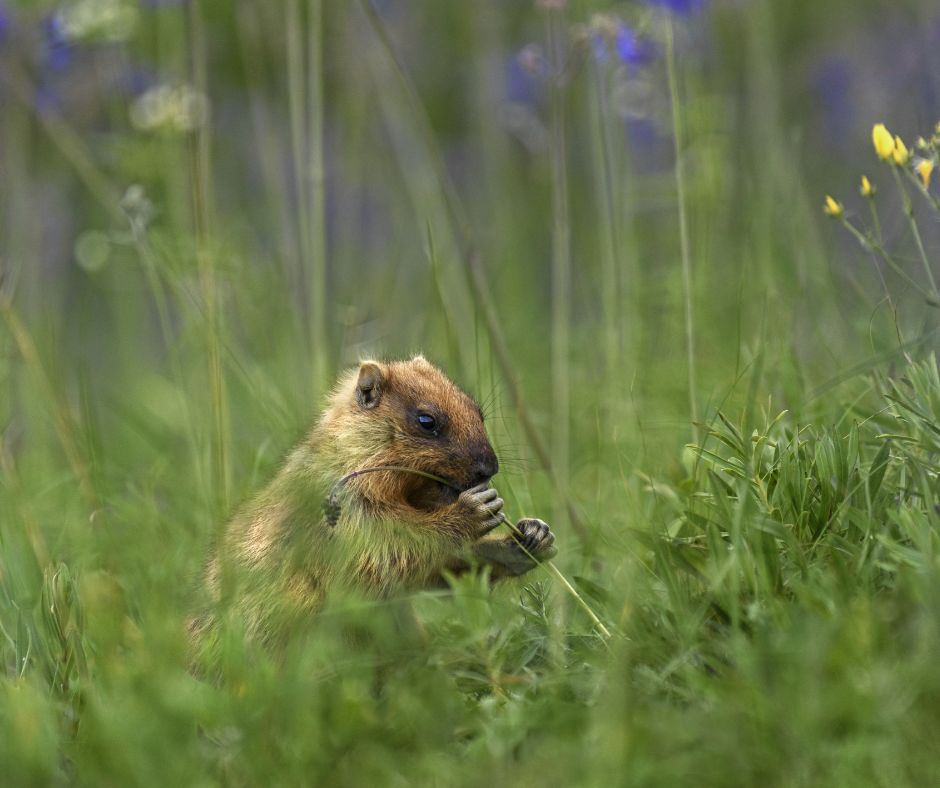 How to Prevent Groundhogs This Spring
How to Prevent Groundhogs This Spring
How to Prevent Groundhogs This Spring
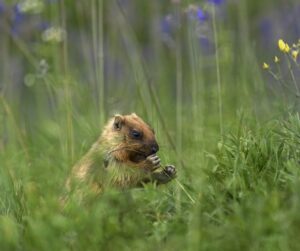 Groundhogs, also known as woodchucks, are one of the most notorious wildlife you can have in your yard, as once these critters exit hibernation in the spring, they will rip up your lawn, hollow out the ground underneath structures like sheds and decks, and raid your garden for any fresh vegetables you may have. Westchester Wildlife can help, we offer groundhog trapping and removal, as well as wildlife fencing and exclusions to keep these troublesome critters from causing real damage to your property.
Groundhogs, also known as woodchucks, are one of the most notorious wildlife you can have in your yard, as once these critters exit hibernation in the spring, they will rip up your lawn, hollow out the ground underneath structures like sheds and decks, and raid your garden for any fresh vegetables you may have. Westchester Wildlife can help, we offer groundhog trapping and removal, as well as wildlife fencing and exclusions to keep these troublesome critters from causing real damage to your property.
When Does Groundhog Hibernation End?
Groundhogs hibernate for longer than most mammals in New York. Groundhogs will dig themselves deep into their burrow and curl up into a ball, dropping their metabolism, slowing their heart rate and breathing down, and lowering their body temperature significantly. Groundhogs will put on extra fat layers as they prepare for hibernation, usually entering this state around late October, staying dormant until they emerge from hibernation in early March. During the early springtime, it is essential to begin preparing for the arrival of groundhogs, as they will soon be searching for places to build dens for their babies.
Groundhog Damage
Groundhogs are burrowing animals, and they are known to dig out their extensive burrow systems inside your yard, which can hollow out the ground, making it weak and vulnerable to caving in, especially if a lot of weight is placed on it. Groundhogs can also dig their tunnels underneath decks, porches and sheds, which can compromise their structural integrity and lead to these structures sinking into the earth. Groundhogs can even dig their tunnels underneath your home’s foundation, which can cause lead to your foundation cracking and sinking into the ground.
Groundhogs can chew through buried electrical wire, and they can also chew on your outdoor patio tile, which can cause it to crack and break. Groundhogs are also known to dig inside vegetable gardens, to feast on the crops growing inside. When groundhogs dig through your yard and garden, they can disrupt root systems of both your vegetable plants and fruit trees, which can kill these plants.
How To Prevent Groundhog Under Sheds, Decks, Porches and Foundations
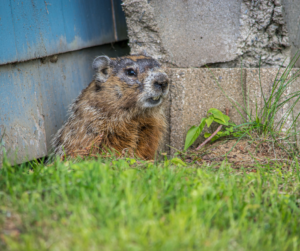 Groundhogs are extremely clever animals that will quickly wizen up to most wildlife harassment techniques, so the most effective method of groundhog prevention is to install wildlife fencing around the areas that you need protected, like a shed, deck, porch or foundation. Wildlife fences can also be installed around the perimeter of the entire yard. Groundhogs are burrowing animals, so making sure these fences are buried at least a foot into the ground is essential.
Groundhogs are extremely clever animals that will quickly wizen up to most wildlife harassment techniques, so the most effective method of groundhog prevention is to install wildlife fencing around the areas that you need protected, like a shed, deck, porch or foundation. Wildlife fences can also be installed around the perimeter of the entire yard. Groundhogs are burrowing animals, so making sure these fences are buried at least a foot into the ground is essential.
Don’t stress about building these wildlife fences yourself, contact Westchester Wildlife. We offer groundhog seal-outs, exclusions, and wildlife barriers/wildlife fencing to prevent these large rodents from damaging your home.
How To Prevent Groundhogs from Eating Your Garden
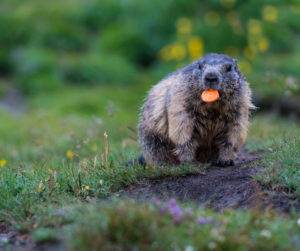 Groundhogs will often dig up and eat the fresh vegetables and fruit from your garden, often killing the plants in the process. If you have a green thumb and take an active interest in keeping up your garden, this can be very frustrating. Thankfully, there are ways to prevent groundhogs from getting inside your garden. Burying a wildlife fence at least a foot deep in the ground around the perimeter of your garden can deter these groundhogs from getting inside. Groundhogs are also drawn to yards with tall grasses and heavy vegetation, so keeping the grass outside your garden cut short and clear of excess plants will keep groundhogs from digging in your yard, as it won’t feel safe.
Groundhogs will often dig up and eat the fresh vegetables and fruit from your garden, often killing the plants in the process. If you have a green thumb and take an active interest in keeping up your garden, this can be very frustrating. Thankfully, there are ways to prevent groundhogs from getting inside your garden. Burying a wildlife fence at least a foot deep in the ground around the perimeter of your garden can deter these groundhogs from getting inside. Groundhogs are also drawn to yards with tall grasses and heavy vegetation, so keeping the grass outside your garden cut short and clear of excess plants will keep groundhogs from digging in your yard, as it won’t feel safe.
Cost of Groundhog Removal
Westchester Wildlife offers groundhog trapping and removal in the Westchester, Dutchess and Putnam counties of New York, as well as in Fairfield County, CT. The cost of groundhog removal is variable, based on various factors including the size of your property and the extent of your groundhog problem. We’d love to hear from you, so contact us today to get started at 800.273.6673!
Groundhog Removal Services Near Me
Groundhogs can be very clever, and can easily avoid traps if you aren’t acutely aware of their patterns and behavior. Thankfully, Westchester Wildlife can help. We offer the best groundhog trapping and removal services for both residential and commercial properties in Westchester, Dutchess and Putnam Counties, NY as well as Fairfield County, CT.
